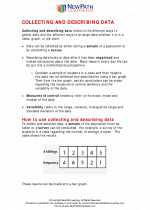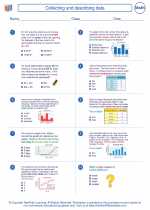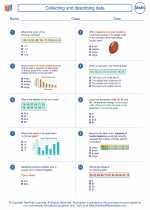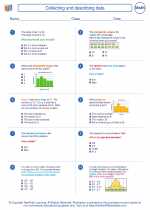Regular Tessellations
A regular tessellation is a pattern of repeating shapes that completely covers a plane with no gaps or overlaps. The shapes used in regular tessellations are called regular polygons, which are polygons with all sides of equal length and all angles of equal measure. There are only three regular polygons that can form a regular tessellation: equilateral triangles, squares, and regular hexagons.
Properties of Regular Tessellations
Regular tessellations have several important properties:
- Vertex Meeting: At every vertex (or corner) of the tessellation, the same number of polygons meet. For equilateral triangles, three polygons meet at each vertex; for squares, four polygons meet at each vertex; and for regular hexagons, six polygons meet at each vertex.
- Edge Meeting: Along each edge of the tessellation, the same sequence of polygons repeats. This means that the arrangement of polygons around each edge is the same throughout the tessellation.
- Angle Sum at Each Vertex: The sum of the interior angles around each vertex is always 360 degrees. This is a property of all polygons, but it is especially important in regular tessellations, where the angles must fit together perfectly to cover the plane without any gaps or overlaps.
Types of Regular Tessellations
There are only three types of regular tessellations, based on the three regular polygons that can form them:
- Triangular Tessellation: Made up of equilateral triangles, where three triangles meet at each vertex.
- Square Tessellation: Made up of squares, where four squares meet at each vertex.
- Hexagonal Tessellation: Made up of regular hexagons, where six hexagons meet at each vertex.
Study Guide
When studying regular tessellations, it's important to understand the properties of regular polygons, such as their interior angles and side lengths. You should also be familiar with the three types of regular tessellations and be able to identify and describe the properties of each type. Practice identifying regular tessellations in real-world examples, such as tiling patterns or decorative designs. Additionally, work on problems that involve calculating the number of polygons meeting at a vertex or determining the angle sum at a vertex in a regular tessellation.
Here are some practice questions to help you study regular tessellations:
- Identify the type of regular tessellation formed by each of the following patterns:
- A pattern of equilateral triangles
- A pattern of squares
- A pattern of regular hexagons
- Determine the number of polygons meeting at a vertex in a regular tessellation made up of regular hexagons.
- Calculate the sum of the interior angles around a vertex in a regular tessellation made up of squares.
By understanding the properties and types of regular tessellations and practicing related problems, you'll be well-prepared to master this topic!
[Regular Tessellations] Related Worksheets and Study Guides:
.◂Math Worksheets and Study Guides Eighth Grade. Collecting and describing data

 Worksheet/Answer key
Worksheet/Answer key
 Worksheet/Answer key
Worksheet/Answer key
 Worksheet/Answer key
Worksheet/Answer key
